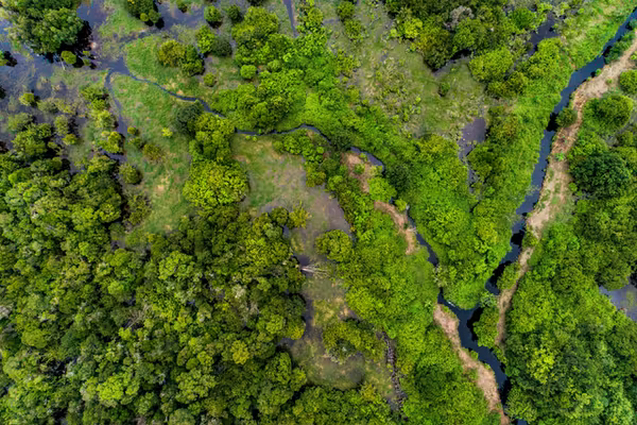
|
|
Heavy rainfall and degrading peatland are putting
archaeological artefacts at increased risk of decay. 139904/Pixabay |
Authors |
At some UK sites of archaeological interest, unusually heavy rainfall is eroding layers of protective peat to damage the preserved relics that lie beneath.
Some of the UK’s finest archaeological remains have been found buried in peat, a type of soil that’s naturally high in acidity and low in oxygen.
That means it preserves wood, leather and textiles extremely well, as the microorganisms that would usually cause these materials to break down can’t thrive.
Peat has helped to keep Britain’s ancient environments alive for modern analysis: from neolithic trackways marking where our ancestors travelled between settlements in Somerset, to preserved bodies like the Lindow Man found in a bog in Cheshire.
The peat environment in which Lindow Man was buried dramatically reduced decay, meaning that his hair and beard have remained visible even after almost 2,000 years.
But climate change is bringing increasingly hotter summers and wetter winters to the UK, including unprecedentedly heavy local rainfall. This changes the landscape by washing away layers of soil and peat to reveal archaeological buildings, items and human remains.

|
|
Vindolanda, a Roman fort, holds a huge range of archaeological
evidence. Francis/Wikimedia
|
Magna
Magna is one of the most fascinating, well-preserved sites in the UK. As a strategic army base, it would have held a commanding position at the junction between three key Roman roads: the Stanegate, Military Way and Maiden Way. Surveys suggest that it was occupied from AD80-85 to the end of Roman Britain, in around AD410.
To study it, archaeologists dug boreholes and inserted devices called piezometers to collect data on groundwater levels and temperature. They’re also sending peat samples to a laboratory for chemical and microbiological analysis. This information will help us to understand how the local environment is changing and what effect this might have on archaeological degradation.
Another Roman fort just a few miles east of Magna, Vindolanda, has provided some of the most significant finds from Roman Britain.
Here, archaeologists have discovered the first evidence of handwriting by a woman (Claudia Severa writing to invite her friend Sulpicia Lepidina to her upcoming birthday party), the world’s oldest boxing gloves from around AD120, and the largest Roman leather shoe collection ever found – consisting of an astonishing 7,000 items.

|
|
Items like these Roman black leather shoes are often found
preserved in peat. Dan Diffendale/Flickr
|
The point of peat
Peatlands cover about 3% of the world’s land area but are one of its best natural carbon stores, holding twice as much carbon as all the world’s forests.
In England and Northern Ireland, peatland makes up 10%-12% of all land, while Scotland has 20% peatland cover. Historically, these landscapes have been drained for use in farming, with peat dried to burn for fuel: releasing massive amounts of carbon into the atmosphere.
Across Europe, an estimated 100,000km² of peatland has been lost over the last 50 years. Much of what remains is poor quality. In the UK, only a fifth of UK peatlands can be described as “near pristine”.

|
|
Peatland stores huge amounts of carbon. Cifor/Flickr, CC BY-NC-SA
|
Archaeologists and policymakers are now working side by side to keep peatlands protected environments, to help capture and preserve both carbon and the evidence of the UK’s history.
And this commitment to protecting peatlands and the heritage they shelter has gone global. Last year, a session at the UN climate conference COP26 was dedicated to highlighting the importance of protecting peatland. But this is only the beginning of a long journey to ensure that peatlands, and the treasures they hold, will remain safe for generations to come.
Links
- Ultimate bogs: how saving peatlands could help save the planet
- Climate change threatening buried UK treasures
- Peatlands, Climate Change and Cultural Heritage - Global Perspectives, Problems, Solutions
- Lindow Man: Gruesome discovery who became 'international celebrity'
- Six reasons to save archaeology from funding cuts
- Three reasons why climate change models are our best hope for understanding the future
- How a humble mushroom could save forests and fight climate change
- Coffee may become more scarce and expensive thanks to climate change – new research

No comments :
Post a Comment